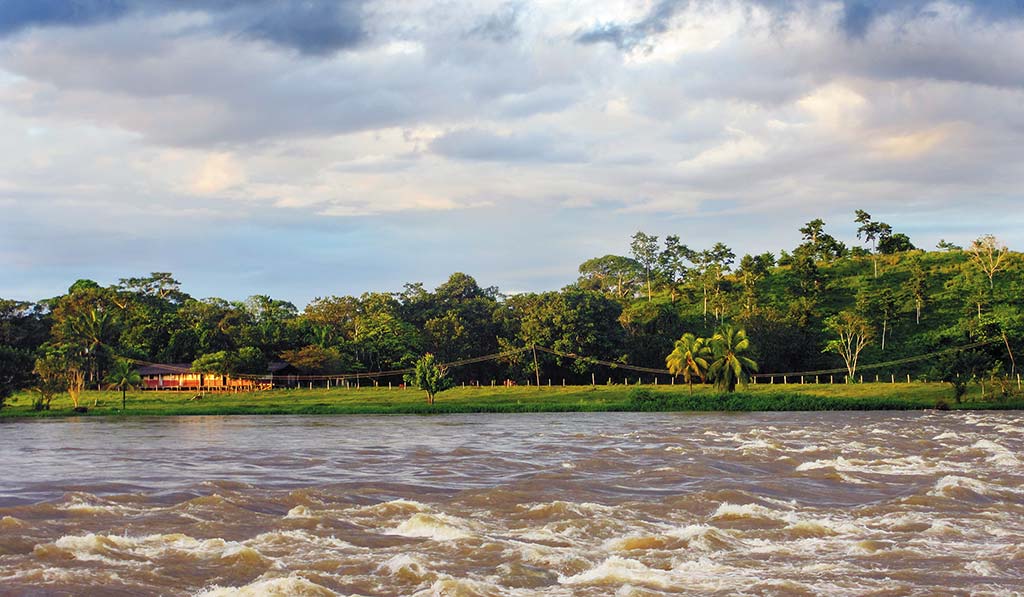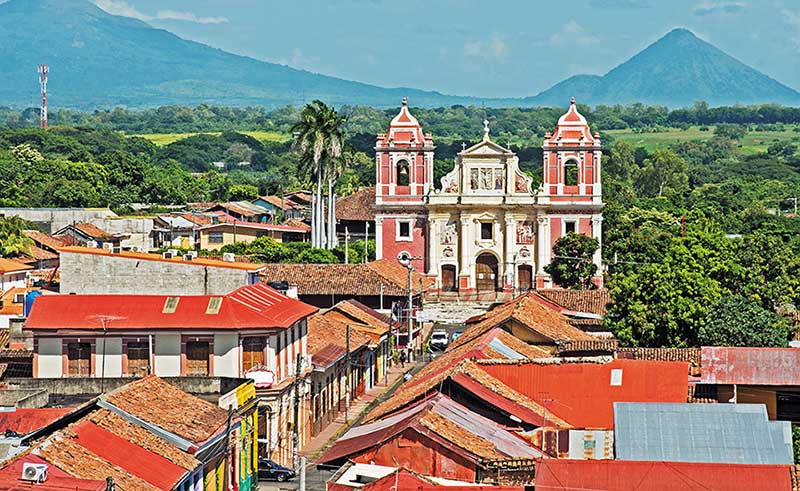At first glance, Nicaragua is brilliant green trees and brightly colored flowers, birdcalls and rich coffee, colonial architecture, and monkeys swinging from branches. Spend some time here, and you’ll hear the rhythmic pounding of hands forming wet cornmeal into tortillas and notice the scent of plantains frying in hot oil. Take a closer look, and you’ll find community. Families sit in front of their houses after a hard day’s work, chatting with their neighbors while children play in the street. Strangers look out for each other on public buses. Folks organize to change problems in their neighborhoods.

Río San Juan near El Castillo. Photo © Elizabeth Perkins.
Nicaragua has a tumultuous and battered past, but the Nicaraguan people have learned to depend on their own resourcefulness to get by.For travelers, Nicaragua is a gem hidden in the rough. Tropical rainforests and soaring volcanoes offer endless opportunities for hiking and exploring. Sandy beaches with shimmering waters allow for languid beachcombing and swimming, while surfers flock to the shores for some of the best waves in the region. Charming cities have thriving dining and nightlife scenes and flourishing café cultures set amidst grand cathedrals and centuries-old Spanish colonial architecture.A culture of collectivism has emerged in response to centuries of injustice. Nicaragua has a tumultuous and battered past, but the Nicaraguan people have learned to depend on their own resourcefulness to get by. Today, you will see this spirit of self-reliance in agricultural cooperatives, artisan collectives, and community organizations—including a burgeoning industry of community tourism—across the country.
Nicaragua is a place to slow down and step into a more relaxed rhythm. Pack a little flexibility, good humor, and, ideally, some basic Spanish. Whether soaking up some sun while sipping rum on the beach, sharing coffee with a rural family, or speeding down a river on a motorboat, you’ll find Nicaragua to be just as its Ministry of Tourism describes it: “unspoiled, uncommon, and unforgettable.”

La Iglesia El Calvario in Chinandega. Photo © La Iglesia El Calvario in Chinandega. Photo © Otto Dusbaba/123rf.
December-February is generally the coolest, least rainy time to visit. August-October is cool as well, but it’s more likely to rain. You’ll also find more Europeans and fewer North Americans during these months. During March-May, the hottest, driest months, dust is inescapable. June and July are hot and rainy, followed by hurricane season September-November, when you’re likely to encounter torrential downpours most afternoons.
Invierno (winter) refers to Nicaragua’s rainy season (May-November). Verano (summer) refers to the dry season (December-April). Due to global warming, it’s now unlikely to encounter rain that lasts for days on the Pacific side of the country, but it still may rain heavily for hours (or just briefly shower) every afternoon.
There are some events worth planning your time around. Anywhere you go during Semana Santa (the week leading up to Easter), expect big crowds and higher prices. Spanish-speakers (and learners) should make a point to attend Granada’s Poetry Festival at the end of February. If you’re looking for a party, San Juan del Sur’s Earthship Pitaya Festival in early March is a must. Catch the Palo de Mayo festival on the Atlantic coast throughout May, and the Crab Soup Festival on the Corn Islands August 27-28. Masaya’s Agüisotes festival on the penultimate Friday in October draws large crowds. In early December, Nicaragua celebrates La Purísima.
Excerpted from the Sixth Edition of Moon Nicaragua.